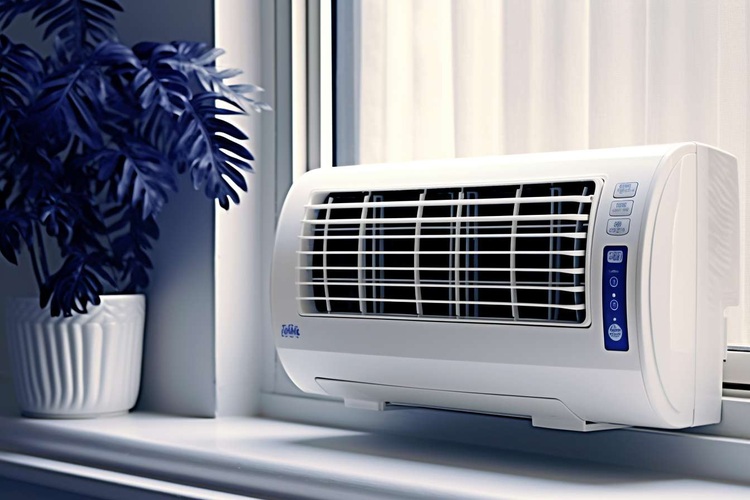Ultimate Guide to Home Cooling and Air Conditioning
Explore practical home cooling solutions and find the right air conditioning system for your space. This in-depth guide covers central AC, ductless mini-splits, window and portable units, energy-efficient options, maintenance tips, and brand features to help you choose a comfortable, cost-effective cooling setup.

Air conditioning has reshaped indoor comfort, making homes and apartments livable even as temperatures climb. Knowing how different AC systems operate and what to consider when buying one helps you stay cool without overspending. This guide walks through key components, the benefits of residential AC, unit types, efficiency strategies, purchase considerations, and trusted brands.
Understanding Air Conditioning Components
At the core of any cooling system are a few essential parts that work together to remove heat from indoor air:
- Evaporator: Located inside, it absorbs warm air and transfers heat to the refrigerant.
- Compressor: The system’s engine, compressing refrigerant to raise its pressure and temperature.
- Condenser: Typically an outdoor unit that releases absorbed heat to the outside air.
- Expansion valve: Controls refrigerant flow into the evaporator, allowing the refrigerant to expand and cool.
These elements form a cycle of evaporation and condensation that extracts heat from your home and dumps it outdoors, creating a steady flow of cooled air inside.
Benefits of Cooling Your Home
Installing an air conditioner delivers more than lower temperatures:
- Consistent comfort: Maintain stable, pleasant indoor conditions regardless of outdoor heat.
- Better indoor air quality: Filters catch dust, pollen, and other particulates, improving breathing conditions.
- Humidity control: Lower moisture levels reduce the risk of mold and mildew.
- Enhanced focus and productivity: Cooler environments are better for work and study.
- Improved sleep: Cooler bedroom temperatures support more restful nights.
Residential Air Conditioning Types
Choosing the right format depends on your living situation, budget, and cooling needs:
- Central air systems: Best for whole-house cooling using ductwork to distribute conditioned air.
- Window units: Compact, affordable options for cooling single rooms or apartments.
- Portable air conditioners: Moveable solutions that require minimal installation and can serve temporary or flexible needs.
- Ductless mini-splits: Offer room-by-room control without ducts, good for additions or homes without existing ductwork.
- Evaporative coolers: Also called swamp coolers, they use water evaporation to cool air and work exceptionally well in dry climates.
Boosting Efficiency and Performance
To keep your AC running effectively while minimizing energy use, adopt these habits:
- Replace or clean filters on a regular schedule to maintain airflow and filtration.
- Keep outdoor condensers free from leaves, grass, and debris to ensure efficient heat exchange.
- Install a programmable or smart thermostat to tailor cooling to your daily routine and reduce wasted runtime.
- Seal gaps around doors and windows to prevent cooled air from escaping and hot air entering.
- Use ceiling or portable fans to circulate air, allowing you to raise the thermostat a few degrees without losing comfort.
- Arrange annual professional tune-ups to check refrigerant levels, electrical components, and overall system health.
Selecting the Right System for Your Space
Make an informed choice by weighing these factors:
- Room or home size: Match cooling capacity (BTUs) to the square footage being cooled; undersized units struggle, oversized units cycle too frequently.
- Energy efficiency: Higher SEER ratings mean lower operating costs over time; look for energy-efficient models to save on bills.
- Noise: Check decibel ratings when installing units in bedrooms or quiet areas.
- Installation logistics: Consider whether your home can accommodate ductwork or if a ductless or window solution is more practical.
- Budget: Balance the upfront cost against long-term energy and maintenance expenses. Higher-efficiency units often cost more initially but pay off over time.
Top Brands and What They Offer
| Brand | Type | Key Features | Energy Efficiency |
|---|---|---|---|
| Carrier | Central AC | Quiet operation and precise temperature control | Up to 26 SEER |
| Trane | Central AC | Durable construction and advanced filtration options | Up to 22 SEER |
| LG | Ductless Mini-Split | Smart home compatibility and eco modes | Up to 28 SEER |
| Mitsubishi | Ductless Mini-Split | Advanced temperature sensing and cold-climate performance | Up to 30.5 SEER |
| Friedrich | Window AC | Reduced noise technology and smart controls | Up to 12.1 EER |
| Frigidaire | Portable AC | 360-degree airflow and built-in dehumidifier | Up to 12,000 BTU |
Cost Disclaimer: Prices and specifications may vary by model and region; verify current pricing and features with retailers or certified installers before purchasing.
Final Thoughts
Air conditioning is a cornerstone of modern home comfort. Choosing the right system involves understanding how different units operate, assessing your space and budget, and prioritizing energy efficiency and maintenance. Regular filter changes, keeping outdoor units clear, and scheduling professional inspections will extend the life of your system and keep operating costs down. Whether you opt for central air, a ductless mini-split, or a portable unit, the right approach will create a cooler, healthier living environment tailored to your needs. Take time to compare models, read reviews, and consult HVAC professionals to find the best balance between comfort, cost, and efficiency.






